Instruction
Pulled In A New Direction? How To Putt Sidesaddle
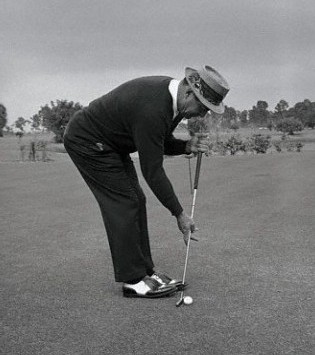
Now that the shoe has dropped and the two major governing bodies of golf have announced a plan to ban anchoring in the golf swing, a fair number of golfers and golf fans are left to ask myriad questions, such as “why now?” and “what options do I have?” Enough writers have taken pains to clarify that the anchor point is banned, not the long putter shaft. Hopefully word gets out and assuages the multitude of torn souls whose salvation was heisted. After enough stages of grief have passed, perhaps these former dilettantes of dwarf will consider life beyond the anchor. For them, and as a fellow sufferer, I offer this piece of solace through the maelstrom.
Face The Music
If you saw the golf movie Seven Days In Utopia, based on the book of the same name by David Cook, you know that the protagonist (spoiler alert!) adopted face-on putting to prompt a return to the professional golfing circuit. The question how would you toss a golf ball to the hole is anything but a zen koan; the answer is simple. You would not stand sideways to the hole and toss it under your lead shoulder, as you essentially do with a traditional putting stroke. Instead, just as you shoot a basket, you would square your shoulders to the target and toss the ball underhanded. You would probably come pretty close to the hole, too. Recent history has veiled the identity of the individual who developed face-on putting, but Gary McCord has written about it in golf magazines and Randy Haag (a northern California amateur) has parlayed its use into regional victories and national amateur success at the mid-amateur level. Even PGA Tour player K.J. Choi gave it a try in 2010 in the British Open!
After Sam Snead’s croquet style was ruled non-complying by the USGA in the late 1960s, Snead went to sidesaddle putting. In those days, the longer putter shaft was nearly non-existent, so Snead went to work with a traditional-length putter. He putted well, winning four West Virginia Open championships and three PGA Senior championships with the method. Randy Haag is a champion amateur golfer from northern California and has been putting face-on for more than 16 years. For a look at his competitive record, visit http://randyhaag.com/about/ and locate any wins and honors from 1997 on. Credit those to the switch.
With face-on putting, I suggest that you find a lengthened putter. It might be the belly one that you imagined you’d use to stake your garden, or it might be one a bit longer. Be certain that you don’t anchor your upper hand to your shoulder (remember the ban?), but that you instead find a way to stabilize the upper hand (the fulcrum) below where the club shaft and head swing. If you are a right-handed putter, position your right foot slightly ahead of the left and then work on horizontal and vertical ball position. Horizontal spacing measures how far “out” from your right foot the ball rests, while vertical spacing determines whether the ball is behind, ahead of or even with the tip of your right shoe. Finally, start practicing.
After working for all of three or four sessions on the aforementioned personal putting green, I played 27 holes at a course between Buffalo and Rochester in early December. I was stunned to find the greens stimping at 9 or 10, simulating in-season conditions. To my partner’s amazement, I did not miss a putt inside 10 feet all day. I’ll admit that I didn’t have any long putts with enormous break (the next hurdle), but I did find my long-distance pace rather quickly. One or two of the 50-feet plus putts were pushed a foot or two off line, but the distance was excellent, leaving me with no more than 2-3 feet for the comebacker.
Here’s my check list for a successful side-saddle safari:
- Find a putter length with which you feel comfortable. I prefer longer shaft, as I don’t want to bend over and strain my lower back.
- Find a putter head that minimizes off-center hit penalties. I changed from an Anser-style head to a Two-Ball mallet for that reason.
- Determine if you want to putt with your left or right foot forward, or have both feet even.
- Determine where to situate the ball, both vertically and laterally. There are many options here, just as with a regular stance: ball forward, even with toes or behind toes. Ball tight against foot or farther away.
- Practice, Practice, Practice. One of the reasons Ernie Els indicated he putted so well with the belly putter was the need for practice. He had putted traditionally for so long that he got lazy and stopped grinding. With the belly putter, there was always enough light at the end of the tunnel that he kept working and kept improving, all the way to a British Open title.
- Putt for something. Find great putters and putt against them for sodas or change or golf balls (or big stakes, if you like). You need to simulate the same pressure you’ll feel on the golf course.
Conclusion
I’ve always been a streaky putter and have often told new partners in May, in the midst of taking 40 putts in a round, that I’ll be down to 28 or 30 in a month and that they will be stunned to find me putting so well. I’m quite interested in taking face-on putting to two levels in 2013. I will begin the season with it, then plan to use it in regional qualifiers for New York State and Buffalo District amateur events. My opinion is that friends will give me good-natured grief for using the method. They will be less inclined to continue the banter when I continue to putt lights out. I expect the reaction in the heat of competition to be much less cordial. Assuming that I am able to control my emotions and execute, I anticipate utterances of:
That can’t be legal
Some guys will have no shame and
If I putted like that…
Truthfully, none of that will matter. If I want to get the ball in the hole and shoot the best score I can, and if sidesaddle or face-on or whatever you call it gives me that opportunity, so be it. If they say That’s not a golf swing. I’ll ask them, “Was Kareem Abdul-Jabbar’s sky hook a set shot?” That should quiet the masses. Check back here at GolfWRX.com and learn of my progress.
Click here for more discussion in the “Putter Forum.”
- LIKE20
- LEGIT6
- WOW2
- LOL1
- IDHT0
- FLOP0
- OB0
- SHANK1
Instruction
Clement: Laid-off or perfect fade? Across-the-line or perfect draw?

Some call the image on the left laid off, but if you are hitting a fade, this could be a perfect backswing for it! Same for across the line for a draw! Stop racking your brain with perceived mistakes and simply match backswing to shot shape!
- LIKE0
- LEGIT0
- WOW0
- LOL0
- IDHT0
- FLOP0
- OB0
- SHANK1
Instruction
The Wedge Guy: The easiest-to-learn golf basic

My golf learning began with this simple fact – if you don’t have a fundamentally sound hold on the golf club, it is practically impossible for your body to execute a fundamentally sound golf swing. I’m still a big believer that the golf swing is much easier to execute if you begin with the proper hold on the club.
As you might imagine, I come into contact with hundreds of golfers of all skill levels. And it is very rare to see a good player with a bad hold on the golf club. There are some exceptions, for sure, but they are very few and very far between, and they typically have beat so many balls with their poor grip that they’ve found a way to work around it.
The reality of biophysics is that the body moves only in certain ways – and the particulars of the way you hold the golf club can totally prevent a sound swing motion that allows the club to release properly through the impact zone. The wonderful thing is that anyone can learn how to put a fundamentally sound hold on the golf club, and you can practice it anywhere your hands are not otherwise engaged, like watching TV or just sitting and relaxing.
Whether you prefer an overlap, interlock or full-finger (not baseball!) grip on the club, the same fundamentals apply. Here are the major grip faults I see most often, in the order of the frequency:
Mis-aligned hands
By this I mean that the palms of the two hands are not parallel to each other. Too many golfers have a weak left hand and strong right, or vice versa. The easiest way to learn how to hold the club with your palms aligned properly is to grip a plain wooden ruler or yardstick. It forces the hands to align properly and shows you how that feels. If you grip and re-grip a yardstick several times, then grip a club, you’ll see that the learning curve is almost immediate.
The position of the grip in the upper/left hand
I also observe many golfers who have the butt of the grip too far into the heel pad of the upper hand (the left hand for right-handed players). It’s amazing how much easier it is to release the club through the ball if even 1/4-1/2″ of the butt is beyond the left heel pad. Try this yourself to see what I mean. Swing the club freely with just your left hand and notice the difference in its release from when you hold it at the end of the grip, versus gripping down even a half inch.
To help you really understand how this works, go to the range and hit shots with your five-iron gripped down a full inch to make the club the same length as your seven-iron. You will probably see an amazing shot shape difference, and likely not see as much distance loss as you would expect.
Too much lower (right) hand on the club
It seems like almost all golfers of 8-10 handicap or higher have the club too far into the palm of the lower hand, because that feels “good” if you are trying to control the path of the clubhead to the ball. But the golf swing is not an effort to hit at the ball – it is a swing of the club. The proper hold on the club has the grip underneath the pad at the base of the fingers. This will likely feel “weak” to you — like you cannot control the club like that. EXACTLY. You should not be trying to control the club with your lower/master hand.
Gripping too tightly
Nearly all golfers hold the club too tightly, which tenses up the forearms and prevents a proper release of the club through impact. In order for the club to move back and through properly, you must feel that the club is controlled by the last three fingers of the upper hand, and the middle two fingers of the lower hand. If you engage your thumbs and forefingers in “holding” the club, the result will almost always be a grip that is too tight. Try this for yourself. Hold the club in your upper hand only, and squeeze firmly with just the last three fingers, with the forefinger and thumb off the club entirely. You have good control, but your forearms are not tense. Then begin to squeeze down with your thumb and forefinger and observe the tensing of the entire forearm. This is the way we are made, so the key to preventing tenseness in the arms is to hold the club very lightly with the “pinchers” — the thumbs and forefingers.
So, those are what I believe are the four fundamentals of a good grip. Anyone can learn them in their home or office very quickly. There is no easier way to improve your ball striking consistency and add distance than giving more attention to the way you hold the golf club.
More from the Wedge Guy
- The Wedge Guy: Golf mastery begins with your wedge game
- The Wedge Guy: Why golf is 20 times harder than brain surgery
- The Wedge Guy: Musings on the golf ball rollback
- LIKE88
- LEGIT13
- WOW6
- LOL1
- IDHT0
- FLOP4
- OB1
- SHANK8
Instruction
Clement: Stop ripping off your swing with this drill!

Not the dreaded headcover under the armpit drill! As if your body is defective and can’t function by itself! Have you seen how incredible the human machine is with all the incredible feats of agility all kinds of athletes are accomplishing? You think your body is so defective (the good Lord is laughing his head off at you) that it needs a headcover tucked under the armpit so you can swing like T-Rex?
- LIKE0
- LEGIT2
- WOW2
- LOL0
- IDHT0
- FLOP0
- OB0
- SHANK2
-

 19th Hole3 weeks ago
19th Hole3 weeks agoDave Portnoy places monstrous outright bet for the 2024 Masters
-

 19th Hole7 days ago
19th Hole7 days agoJustin Thomas on the equipment choice of Scottie Scheffler that he thinks is ‘weird’
-

 19th Hole3 weeks ago
19th Hole3 weeks agoTiger Woods arrives at 2024 Masters equipped with a putter that may surprise you
-

 19th Hole7 days ago
19th Hole7 days ago‘Absolutely crazy’ – Major champ lays into Patrick Cantlay over his decision on final hole of RBC Heritage
-

 19th Hole2 weeks ago
19th Hole2 weeks agoTwo star names reportedly blanked Jon Rahm all week at the Masters
-

 19th Hole2 weeks ago
19th Hole2 weeks agoReport: LIV Golf identifies latest star name they hope to sign to breakaway tour
-

 19th Hole2 weeks ago
19th Hole2 weeks agoNeal Shipley presser ends in awkward fashion after reporter claims Tiger handed him note on 8th fairway
-

 19th Hole2 weeks ago
19th Hole2 weeks agoBrandel Chamblee has ‘no doubt’ who started the McIlroy/LIV rumor and why

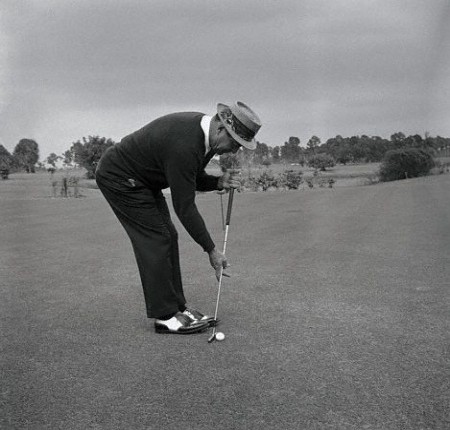





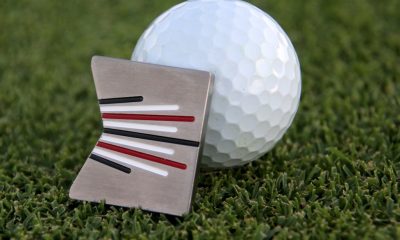

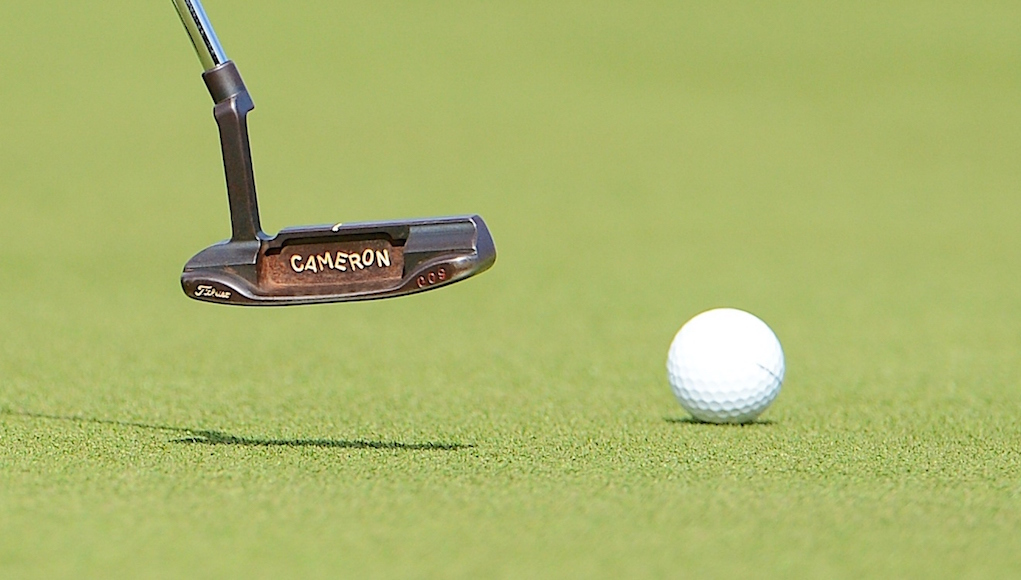
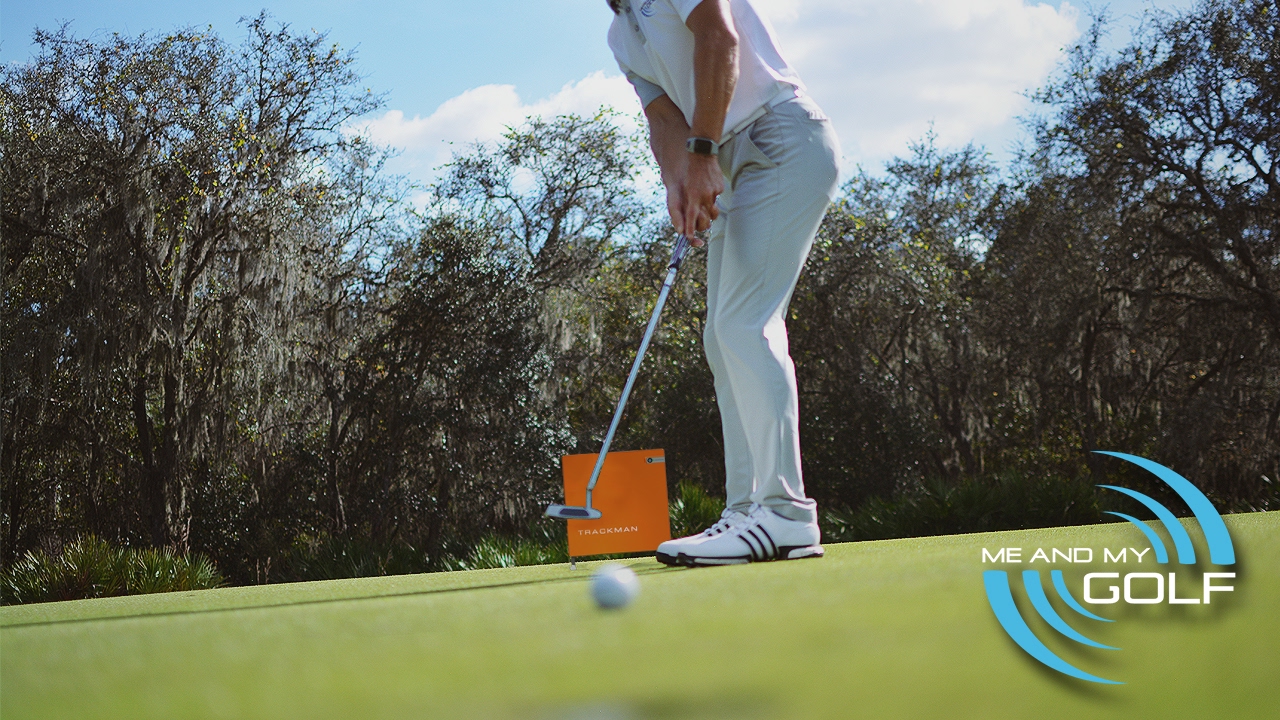
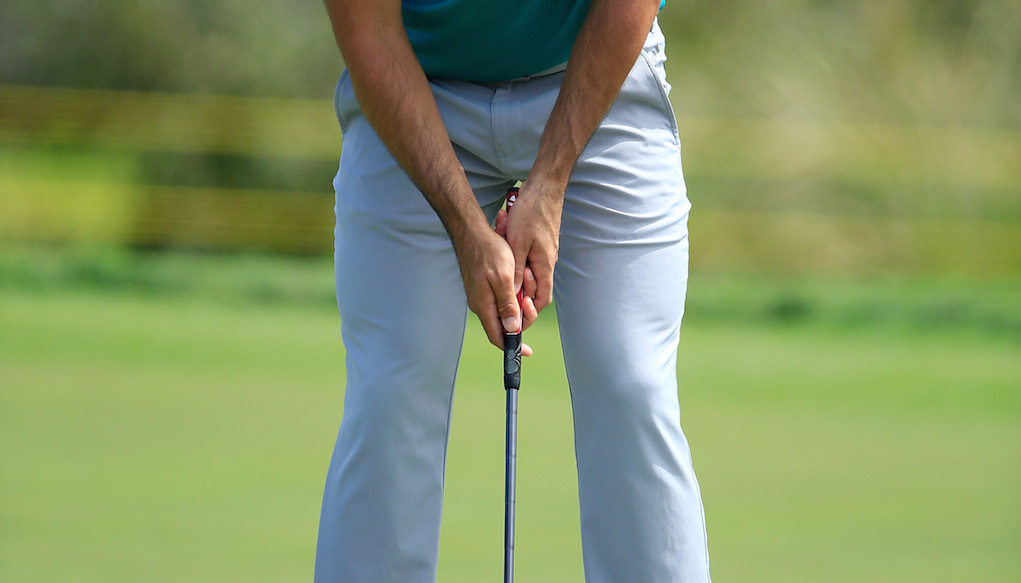
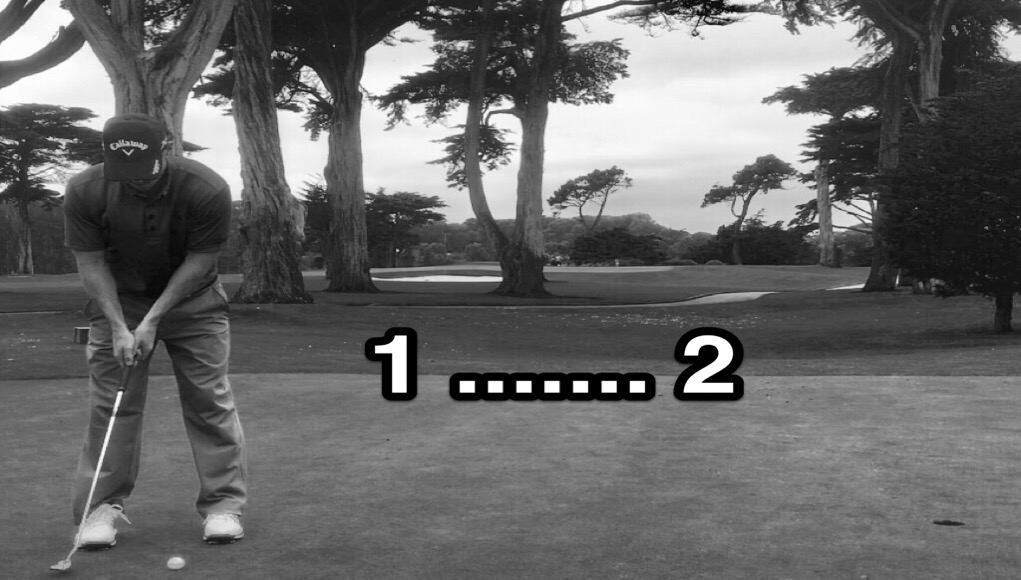





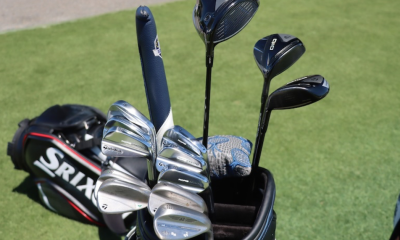

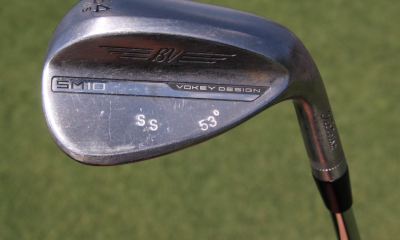

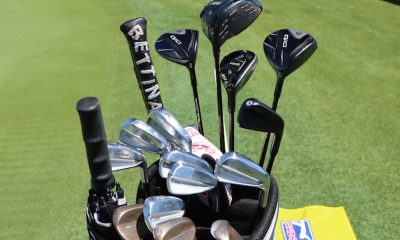

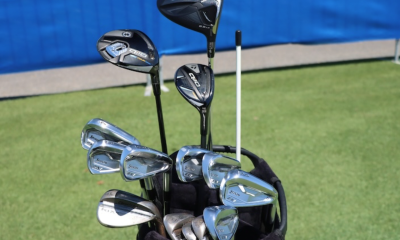

John
Feb 15, 2013 at 9:22 pm
I have been using this style for 3 months. What I have discovered is:
Center shaft is best
Max. lie, 80 deg loft 3 deg or less
Length, upper arm, parallel , 49″ for me
Heavy is good, my head is 500 gm
Boccieri Golf, Heavy putters, Scottsdale built mine and I am very pleased
Sometimes it seems almost too easy, am surprised the pros are not using.
Ronald Montesano
Jan 16, 2013 at 5:26 am
Jeremy, you are correct that the left forearm will not be anchored if the ban is put into the rules. Don’t know if it was conscious or not, but I naturally didn’t press my forearm to my chest, so I guess I’m still legal!
Bob, that’s an excellent point. It brings a different 180-degree visual spectrum into the moment, so you need to remind those fidgety partners to find their center and stay there…ohm!
Bob
Jan 13, 2013 at 5:07 pm
One other thing to consider.
While facing the hole to putt most players will stand to your side and in your peripheral vision. It’s difficult to retrain your playing partners. Sunglasses with wide temples help.
Jeremy
Jan 3, 2013 at 11:00 am
Having putted and studied sidesaddle for many years there are some things to keep in mind:
1- it is by far the easiest and most consistent way to putt day and day out
2-kj had everything going wrong for him when he did it in the Open. Wrong putter head, wrong shaft length and wrong stance. I assume that’s why he ditched it after the Open
3- you can try to use a normal belly or long putter but you will be cheating yourself out of the full impact this style provides. The most lethal shaft is a reverse type similar to the one the putt guru Karl designs out of Vegas. You can look him up
4- unfortunately. The ban will hurt the easiest and most effective way to sidesaddle because to do it you need to anchor your entire left forearm across your belly (for a right handler) holding out suspended in air like Snead is simply not as stable
5- a mallet head is by far the best
6- history has shown you can be the best in the world and putt conventional with proper techniques. I suggest check out Geoff Mangum
asics10
Dec 30, 2012 at 8:56 pm
Were you playing Terry Hills? Those green were rolling great even at the end of November.
Rico
Dec 30, 2012 at 1:36 pm
What is the rule on how upright the shaft can be in relation to the putter head. This intrigues me because since the the ban is only for anchoring against the body, you can essentially anchor the grip end down the forearm and make the putter an extension of your arm.
loonsailor
Dec 30, 2012 at 2:59 pm
It needs to be at least 10 degrees off vertical. See http://www.usga.org/Rule-Books/Rules-on-Clubs-and-Balls/Clubs/#align
loonsailor
Dec 30, 2012 at 12:47 pm
Thanks for the article. I’m a new golfer, having started just a year ago when I turned 60. I started from the beginning with a belly putter, and pretty quickly settled on a style of looking at the hole, not the ball, as I putt. Works for me, and I have no particular desire to learn to putt in the “traditional” way. Sidesaddle is completely news to me, and I’ll definitely give it a try. It looks quite natural to me.
In poking around a bit, there are already some putters designed specifically for this. Somebody already mentioned wonderputter.com. In addition, I found the L2 at http://www.laterallineputter.com/, and the PT Sniper at http://ptsniper.net/. The latter is in Japanese only, and there’s not much info on it, but there are a bunch of youtube videos of the L2 and it looks quite interesting. He’s posted a message on his web site that he’ll be making some small changes to the L2, so that it will conform with the new ruling. Has anybody tried any of these special putters? Any comments?
As to it looking ridiculous, I disagree. It just doesn’t look the way we’re used to. If you gave a ball and a stick to somebody who’d never seen golf, and pointed to a hole, this might very well be what they do with it.
Thanks again for the enlightening post!
Pat Dearn
Dec 29, 2012 at 9:56 pm
I don’t know…it just looks rediculous…
Ronald Montesano
Dec 28, 2012 at 3:41 pm
Jeff, you may putt with one or two hands. However you putt best and legally, awesome.
My understanding of the rules proposal is that it will correspond with the next publication of the Rules of Golf. What the PGA Tour does behind closed doors is another ball of wax.
Austin
Dec 28, 2012 at 7:53 am
Paul,
There is discussion amongst the pga tour that an earlier ban may take effect. To my knowledge, there is not any discussion of an earlier ban amongst us mere mortals.
Jeff
Dec 28, 2012 at 7:29 am
Are two hands on the putter required, I have been known to stand to the side and putt with only one hand when the feel for the putting stroke has left me.
Paul Cleeve
Dec 26, 2012 at 11:41 pm
Have heard that the date of change for the anchor/pivot putter may be as soon as 2013/2014 not 2016, Is this true?
Have you seen the side saddle/ face the hole putter at wonderputter.com ? originally filmed in Austin, Texas around 1998.
Ronald Montesano
Dec 23, 2012 at 2:35 pm
Thank you, Thor. You must have posted your comment as I was typing.
Ronald Montesano
Dec 23, 2012 at 12:38 pm
Dan, you are correct. If you read the article closely (at times I struggle with my native language) you’ll note that I discuss lateral distance OUTSIDE of the right foot for ball placement. You’ll also note that the photo of Sam Snead shows him putting sidesaddle. Immediately below the photo is the commentary on the illegality of the croquet/between the legs style. Thanks for your comment!
Thor
Dec 23, 2012 at 10:16 am
Dan,
The Rule reads:
e. Standing Astride or on Line of Putt
The player must not make a stroke on the putting green from a stance
astride, or with either foot touching, the line of putt or an extension of that
line behind the ball.
dan
Dec 22, 2012 at 5:02 pm
Is face on legal? Provided you don’t swing between the legs but rather on the side?
I always thought you couldn’t stand face on.
Ronald Montesano
Dec 21, 2012 at 10:45 pm
Thanks, NL and Rufiolegacy. Sometimes the folks who want (but can’t find) an easy fix are the same ones to attribute “easy fix” to a controversial method. If the snow melts, I’ll be out on the course this weekend to continue the experiment.
Rufiolegacy
Dec 21, 2012 at 8:33 pm
Great article! I built a forearm lock putter when the ban was announced and have been grinding away with it, but I read that book (seven days in utopia) and always wanted to build one. Who knows maybe I will still this year. Good luck, I will be checking your progress
NL
Dec 21, 2012 at 2:00 pm
I’ve attended a seminar by David Cook and regret not trying one of his “face-on” putters. Regardless of the putting method, I agree, productive practice is the key. Thanks for the well written contribution!